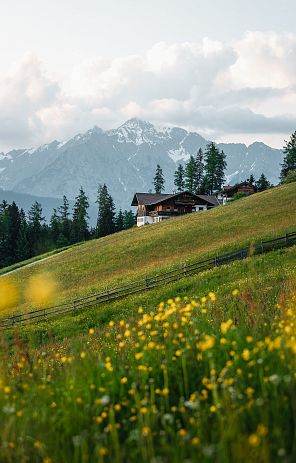The yarrow. Medicinal plant
Yarrow was the medicinal plant of the year in 2004 and rightly so, because this herb with its white or pale pink flowers has it all. This is also revealed by its name, "garbe" is derived from the Old High German "garwe", which means "health-giver". Animals, and sheep in particular, love the plant and eat it especially when they have stomach pains. Its effects on the gastrointestinal tract, on the skin and for cramps, both internally and externally, are scientifically recognized.
A small group of people may experience allergic reactions, which are known to occur with composite plants. The daily dose of approx. 5 g should not be exceeded. The delicately feathery leaves of the yarrow are also known as the "eyebrow of Venus".
Its ingredients are essential oils, bitter substances, tannins, flavonoids, resins, coumarins, inulin, potassium and copper.
Use in folk medicine
- hemostatic, wound healing
- for liver and bile disorders
- for bleeding gums
- for gastrointestinal disorders, abdominal pain
- for skin diseases, hemorrhoids
- For menstrual and abdominal pain
Use as a food and medicinal plant
Yarrow has a very spicy, slightly bitter taste. It is the bitter substances that help us with digestion. It is therefore particularly suitable as an ingredient for herbal salts, pasta dough, herb butter, spreads or spicy vinegar. The young, tender leaves are used for this.
But yarrow also goes well in salads or vegetable dishes. Simply add the tender leaves and finely chopped flowers to salads or mixed vegetables. Even in ancient times, yarrow was known as a special women's herb. Hildegard von Bingen described it as warm and dry. It helps to treat weak, irregular and also too heavy menstruation and discharge, and also counteracts menstrual pain. It has a balancing effect on oestrogen levels. Yarrow also has an influence on the soul. It is calming and helps with weather-related headaches and migraines. It is also helpful as an incense plant: it is known as the "cure for all ills".
In Tyrol, the flowers are collected and mixed with a good schnapps. A sip of this "digestif" helps digestion if you have eaten too much or too fat. The tincture also promotes blood circulation and relaxes the blood vessels.
Recipes with yarrow
Detox tea:
Infuse yarrow, marigold and a little nettle for approx. 1 - 3 minutes!
Yarrow oil:
An oil extract with yarrow flowers can help with wounds, eczema, excessive perspiration and hair loss.
Fresh flowers are placed in a screw-top jar, poured with high-quality oil, placed in a warm, sunny place, shaken daily or weighed down with a stone and strained after four weeks. The finished oil can be kept at room temperature for up to a year.
Yarrow ointment:
This oil can be used to make a healing ointment for painful hemorrhoids and eczema. To do this, add approx. 30 g beeswax to 100 ml oil. Apply overnight and repeat several times.
Yarrow butter:
Fresh yarrow flowers and young leaves
butter at room temperature, salt, pepper. (possibly garlic to taste)
Finely chop the flowers and leaves, mix with the soft butter and spices.
Leave to harden in the fridge. Goes well with fish, meat, potatoes and vegetables.
Yarrow bitters:
2 handfuls of fresh yarrow flowers
½ l grain or other schnapps
100 ml water
50 g sugar candy and 2 tbsp honey
Bring the sugar and water to the boil, stir the honey into the warm liquid. Pour over the flowers with the schnapps. Leave to stand for two weeks, strain and pour into clean bottles. Drink a small glass for bloating and flatulence.



